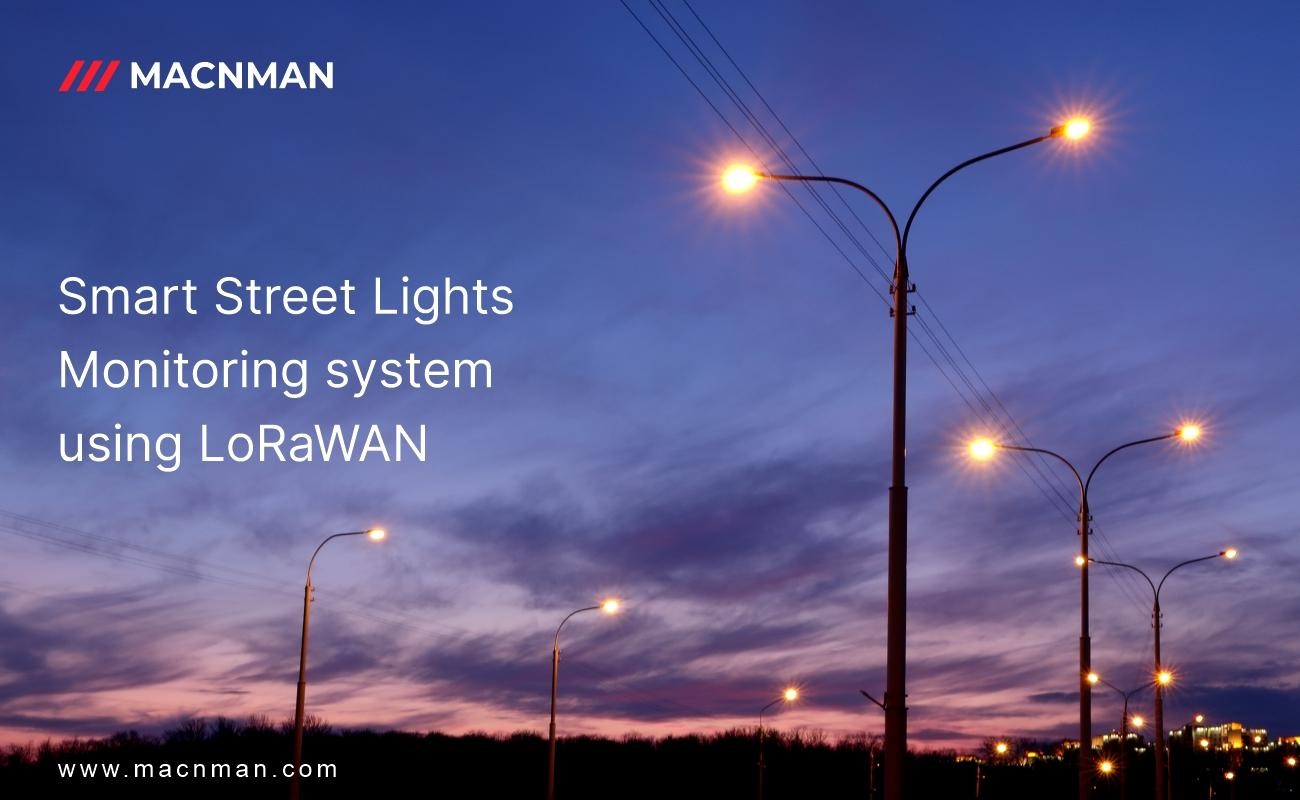
Introduction
Smart street lights monitoring system has become a need of an hour. Streetlights consume a significant portion of a city's energy resources, with their operation accounting for as much as 60% of the city's total energy expenditure. Moreover, existing street light designs often lack optimization for maximum energy efficiency. For instance, most streetlights operate using a binary "on/off" system on a fixed schedule, without the ability to dim the lights during twilight hours to conserve energy. Traditional street lights are being replaced by innovative Smart Street Lights system, and one technology that's driving this transformation is LoRaWAN.
LoRaWAN, short for Long Range Wide Area Network, is a low-power, wide-area networking protocol designed to connect Internet of Things (IoT) devices over long distances. When integrated with smart street lights system, it brings a multitude of benefits, from energy efficiency to remote monitoring and control. In this blog, we'll delve into the world of Smart Street Lights monitoring system using LoRaWAN, exploring their advantages, applications, and the brighter future they promise.
The Advantages of Smart Street Lights monitoring system
Smart street lights monitoring system equipped with LoRaWAN gateways offer numerous advantages, making them a valuable addition to modern urban infrastructure.
Here are some of the key benefits:
- Energy Efficiency: Smart street lights monitoring system can adjust their brightness based on real-time conditions, such as ambient light levels and the presence of pedestrians or vehicles. This dynamic control reduces energy consumption, leading to significant cost savings and a lower carbon footprint.
- Cost Savings: By optimizing energy usage and reducing maintenance costs, municipalities and organizations can achieve substantial long-term cost savings. The ability to remotely monitor and manage street lights also reduces the need for physical inspections and maintenance crews.
- Remote Monitoring and Control: LoRaWAN gateways enable remote monitoring and control of street lights from a centralized dashboard. Operators can adjust lighting schedules, brightness levels, and troubleshoot issues without the need for on-site visits, improving operational efficiency.
- Enhanced Safety: Smart street lights monitoring system can include sensors to detect motion, sound, or air quality. This data can be used to improve public safety by activating brighter lighting when needed, monitoring traffic conditions, and even detecting emergencies like accidents or fires.
- Environmental Sustainability: Reduced energy consumption not only saves costs but also lowers greenhouse gas emissions. Smart street lights monitoring system contribute to a city's sustainability goals by using energy more efficiently and supporting clean energy initiatives.
- Longer Lifespan: By optimizing lighting levels and reducing overuse, smart street lights system can extend the lifespan of lighting fixtures, reducing the frequency of replacements and associated costs.
- Customized Lighting: Cities can tailor lighting schedules and intensity to specific areas or events, enhancing visibility and security during late-night activities or in high-traffic areas.
- Traffic Management: Smart street lights system equipped with sensors can provide real-time traffic data, allowing for better traffic management, congestion reduction, and improved road safety.
- Data Collection: LoRaWAN gateways enable the collection of valuable data from various sensors within the smart street lights. This data can be used for analytics, urban planning, and future infrastructure improvements.
- Quick Response to Issues: Smart street lights system can detect faults and failures in real-time, alerting maintenance teams for rapid response and repair. This minimizes downtime and ensures well-lit streets.
- Future-Proof Infrastructure: LoRaWAN gateways are highly scalable and can accommodate additional IoT devices and applications as cities evolve. This future-proofing allows for ongoing enhancements to smart city infrastructure.
- Reduced Light Pollution: Smart street lights monitoring system can minimize light pollution by adjusting brightness levels based on actual requirements, preserving the quality of the night sky and minimizing disruption to ecosystems.

How Smart Street Lights Monitoring system works?
Smart street light monitoring systems operate by automatically adjusting the brightness of the linked street light based on a sophisticated algorithm and data from external sensors. These sensors collect information such as local sunrise and sunset times, a daily schedule for light levels, pre-set lighting scenarios, human presence, traffic conditions, and even weather situations.
To achieve this, a traditional or LED street light typically includes an Outdoor Lamp Controller (OLC). The primary function of this controller is to send and receive commands to and from the connected street light. These commands encompass actions like turning the light on or off, adjusting its brightness, scheduling lighting changes, and delivering maintenance notifications.
Moreover, the Outdoor Lamp Controller (OLC) serves as a crucial link between the connected street light and a Central Management System (CMS), often web-based software. The OLC gathers luminaire data and shares it with the central management system, facilitating real-time monitoring and control of street lighting infrastructure.
Conclusion
Smart Street Lights monitoring systems using Macnman’s LoRaWAN gateways and sensors are illuminating the path to a smarter, more sustainable urban future. With their energy efficiency, remote monitoring capabilities, and adaptability, these lights offer numerous benefits to cities and their residents. From reducing energy costs to improving safety and contributing to a cleaner environment, the advantages are clear.
In summary, smart street lights system equipped with LoRaWAN gateways offer numerous advantages, ranging from energy efficiency and cost savings to enhanced safety, sustainability, and data-driven urban planning. As cities worldwide continue to embrace smart technology, these intelligent lighting solutions play a pivotal role in creating safer, more efficient, and sustainable urban environments.